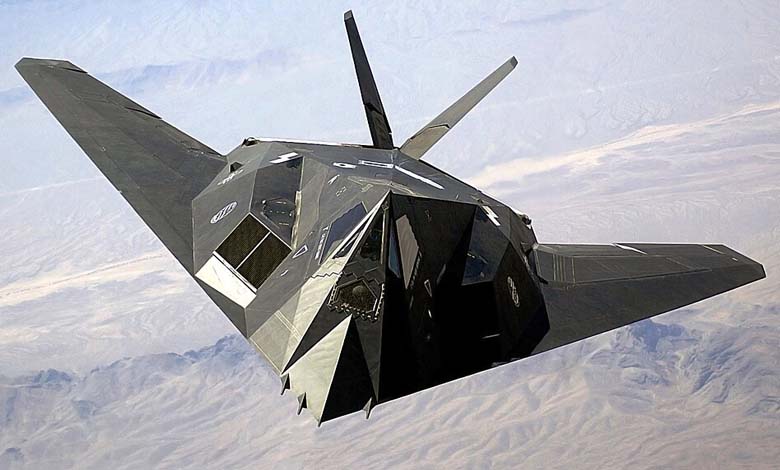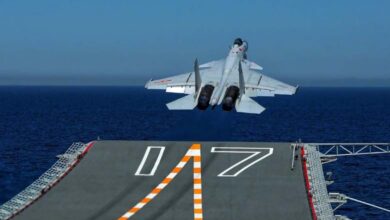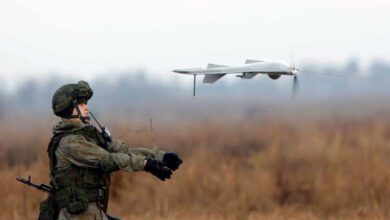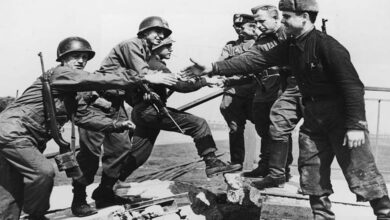The Plane That Never Dies: F-117 Takes to the Skies 17 Years After Retirement

Seventeen years after its official retirement, the iconic F-117 “Nighthawk” stealth fighter continues to serve multiple roles within the U.S. Air Force, proving that its legacy in military aviation is far from over.
-
Air Force Two: Discover the Plane of America’s Second-in-Command
-
Due to Western sanctions: Russian passenger plane crashes, all passengers feared dead
Although the aircraft was officially withdrawn from service in 2008, it never completely disappeared from the skies. The specialized magazine The Aviationist recently reported a rare sighting of two F-117s refueling mid-air from a Boeing KC-46 Pegasus over Los Angeles earlier this week. The planes were heading southwest toward naval test ranges off the California coast, likely within the Point Mugu range area.
Independent aviation photographer Matt Hartman, known for capturing rare aircraft over California, documented the scene and shared the images on his X account (formerly Twitter).
Flight tracking data confirmed that the KC-46 refueling tanker had departed from McConnell Air Force Base in Kansas and met the F-117s north of Edwards Air Force Base.
-
20 Minutes and a Weapon Hidden in a Shoe… the Story of the First Plane Hijacking in History
-
The Mystery of the American Military Plane… An Unfinished Secret Mission 63 Years Ago
An “Active Retirement” for a Legendary Fighter
Despite being retired for more than 17 years, the F-117 continues to fly occasionally. Designed in the 1970s as a single-seat, twin-engine stealth attack aircraft, it remains involved in testing and specialized missions for the U.S. Air Force.
Unconfirmed reports suggest it was secretly deployed in the Middle East in 2015, though the Pentagon never verified this. In March 2024, the Air Force announced that it was testing in-flight refueling of the F-117 using its newest tanker, the KC-46A Pegasus — which explains last week’s sightings.
These operations are likely intended to preserve the aircraft’s readiness for training and experimental missions rather than to return it to combat service.
Though officially “retired,” the F-117 continues to play a critical role in radar and sensor testing, helping develop systems capable of detecting enemy stealth aircraft. These missions often require extended flights, necessitating aerial refueling.
-
A Mysterious Mission… A U.S. Spy Plane Over Cartel Territory
-
The Dream of Airborne Rearmament: A New Goal for the U.S. Air Force
Old Design, Renewed Strategic Value
Despite its futuristic angular design, the F-117 is a product of the 1970s — the era of Star Wars and disco.
It entered service in the 1980s under one of the most secretive programs in aviation history, becoming the world’s first operational aircraft built entirely around stealth technology.
While its stealth capabilities have been surpassed by modern fifth-generation fighters like the F-22 Raptor and F-35 Lightning II, the F-117 remains difficult to detect for many contemporary radar systems.
As a result, it now serves as an ideal platform for training and for testing radar systems and missile defense technologies designed to counter stealth threats.
Military analyst Brandon Weichert noted, “The F-117’s stealth technology may seem outdated compared to fifth-generation fighters, but it’s still far ahead of most conventional aircraft. That’s why the Air Force continues to view it as a valuable training tool for pilots transitioning to newer stealth platforms.”
-
America’s Crucial Gamble: One Aircraft That Could Decide the Fate of the F-35
-
Bagram Air Base: Legacy of the War on Al-Qaeda and Holder of the Nuclear Secret
From Area 51 to Area 52
F-117 operations are currently based out of the Tonopah Test Range in Nevada, nicknamed “Area 52” due to its level of secrecy, comparable to that of the infamous “Area 51” about 70 miles to the southeast.
The aircraft is expected to remain in “partial retirement” until the mid-2030s, giving aviation enthusiasts more opportunities to spot it over the American Southwest.
For those less fortunate, six F-117s are currently on display in museums across the United States — enduring symbols of secrecy, innovation, and American technological superiority.
-
Through the Army… China Outlines Its Vision for a Fairer World Order
-
Sovereignty dispute in Scarborough: a new diplomatic confrontation between the U.S. and China
-
Syria Urges the UN Security Council to Take a Firm Stance Against Israeli Airstrikes
-
Five Fifth-Generation Fighters: A New Era for the Chinese Air Force












